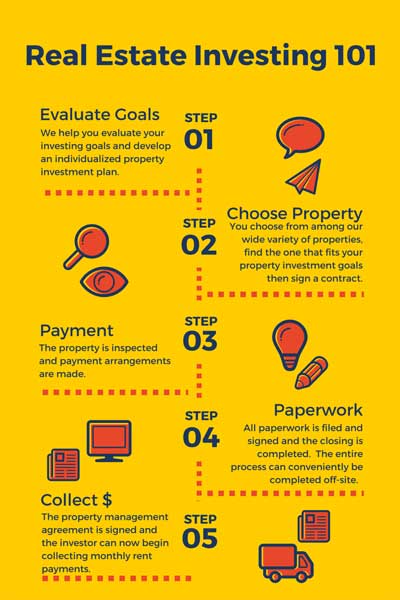However it seldom records senior management's attention. In numerous companies, property remains a reactive, second-order personnel function, concentrated on discrete tasks and deals rather than on the company's broader tactical problems. Place and layout options are made within business units, driven by short-term needs, and based on conventional wisdom. Proximity to headquarters can take precedence over customers' and workers' preferences. The five maxims gone over belowintended not for property professionals however for the leaders who guide themhighlight the problems that senior supervisors need to comprehend. A business's portfolio of real estate holdings should be better to the enterprise than the sum of its specific sites.
Executives need a "snapshot" of the business's footprint: the locations, the land and structure types, the usage and condition of major facilities, the lease terms and operating expenses, and the financial and environmental threats. Leaders likewise need a dynamic, moving photo of where corporate strategy is driving their realty holdings and of how the footprint could alter depending upon the path they take. When they compare the snapshottables, maps, and photoswith the "movie," comprised of robust scenarios of a company's known and possible requirements, the analysis will most likely expose some misalignments. When you have an exclusive contract with a real estate agent. The company may have too much space in one area and too little in another, or the incorrect sort of space in certain areas.
Armed with these insights, a leader can make the most of portfolio opportunities that a site-by-site analysis will not expose. For instance, workplaces that do not need to be downtown can be transferred to less pricey (though not necessarily remote) submarkets. Redundant centers can be sold, subleased, or left. The portfolio approach is particularly crucial when a company is going through a significant modification, such as a merger, an acquisition, or a divestment. Justifying a company's real estatethat is, matching space and facilities (supply) to strategic and operational requirements (need) can be as essential as rationalizing the workforce. How to get real estate license. The process of corresponding supply and demand, physically, financially, and operationally, often involves relocations, closures, and personalities.
Walter Thompson after getting the firm. And when divestments loom, realty is typically the most visible and valuable assetwitness Bear Stearns, whose Wall Street building was its principal asset when the company collapsed. Portfolio analysis can also notify leaders about a property's costs and utilizes in time. The overall costs of operating and keeping a facility during its beneficial life (usually around 50 years) can be often times the original expenses of building or remodeling it. Taking a portfolio view enables much better preparation of upkeep spending and of the timing of structure subleases and sales. By understanding this life cycle holistically, leaders can anticipateand possibly avertproject-level actions that compromise portfolio-wide gains.
As business aim to reduce expenses through outsourcing, they should keep in mind their indirect duty for centers that house outsourced functions. Workers at those websites might not be business staff members, however their efficiency depends heavily on the area and configuration of facilities. In addition, business can timeshare job be based on stakeholder advocacy and even legal action if work environment health and safety requirements aren't satisfied. Companies that have outsourced a considerable portion of their functions, Citigroup and Nike, for examplehave found themselves with substantial de facto portfolios that should be handled as adroitly as the genuine estate they st thomas timeshare hold straight. The nimble company guarantees that it has maximum versatility throughout its realty holdingseven if that suggests paying more up front in some circumstances.
Companies that reward versatility tend to own less and lease more. Pfizer, for example, generally owned the majority of its facilities to guarantee control and believed that owning was less expensive gradually than leasing. Nevertheless, as industry changes led the company to get rid of facilities rather than undertake expensive retrofits, Pfizer discovered that divesting specialized R&D facilities was exceptionally difficult. The company plans to examine leasing and flexible-use choices when it needs new R&D space in the future. When Pfizer started revamping its vast collection of genuine estate in 2006, leaders found that almost 15% of each research dollar was going to facilities devaluation and site-operating costs.
How To Become A Real Estate Investor Things To Know Before You Get This

Lease terms themselves offer a method to maximize versatility. Shorter terms, with more frequent and earlier termination dates, expansion and exit clauses, and renewal options, can assist a business adjust to changing situations. Coordinating completion dates of leases, subleases, and exit stipulations in adjacent spaces likewise enables companies to shift or dissolve operations. Savvy supervisors negotiate leases as they do equipment purchases: They establish a base cost and specify a variety of alternatives for which the company is prepared to pay a premium, depending on the flexibility it needsfor example, exit rights after one year (instead of the normal five) for an unit that is up for sale or modular options on new area for a fast-growing start-up.
In unpredictable times, up-front costs might be low relative to the hidden functional expenses of having too little or too much area, or the wrong type of area in the wrong location. The easiest type of physical versatility is area that how do you get rid of your timeshare is simple to subdivide or sublease. In buildings that use such space, companies can benefit from less-expensive long-lasting leases while adapting to changing scenarios by subleasing some of their area to others. Whole buildings can be designed for flexibility. For instance, modular structures can be rapidly erected and converted from one use to another. "Shrink-wrapped" centers, designed from the within out, can be smaller since they do not have the pockets of surplus area that generally exist inside a one-size-fits-all box.
In China, short-term "disposable factories" provide versatility in land usage and capital release. The non reusable structure is not always suitableboth employee comfort and environmental effects must be considered. However such structures are one-fourth the expense of a permanent plant, take only one-sixth of the time to build, are simple to run and maintain, and can be rapidly and cheaply taken apart. More-permanent structures can be developed with future uses in mind, making it simpler for organizations to trade a pricey, complicated, or outdated use for a brand-new, more marketable one. These fungible styles have easy, generic common areas, standardized area modules, movable walls, and accessible electric and HEATING AND COOLING infrastructure, all of which make the space simple to reconfigure when anticipated usages or operating expenditures change.

Companies can keep their realty flexibility if they are ready to consider alternative work environment plans for staff members. Working from home is the most apparent example of an alternative workplace. Undoubtedly, "telecommuting" has remained in our lexicon for several years, however it was limited till just recently to choose senior staff members and workers in self-directed functions. (See "The Alternative Office," HBR May, June 1998.) Today, however, some business consistently provide telecommuting choices to lots of kinds of workers and, as a result, are finding opportunities to reduce their genuine estate costs and increase staff member satisfaction. It is not a surprise that leaders not trained in realty technique may depend on impulse or casual chatter when making genuine estate decisionsnor is it a surprise when those decisions fail.